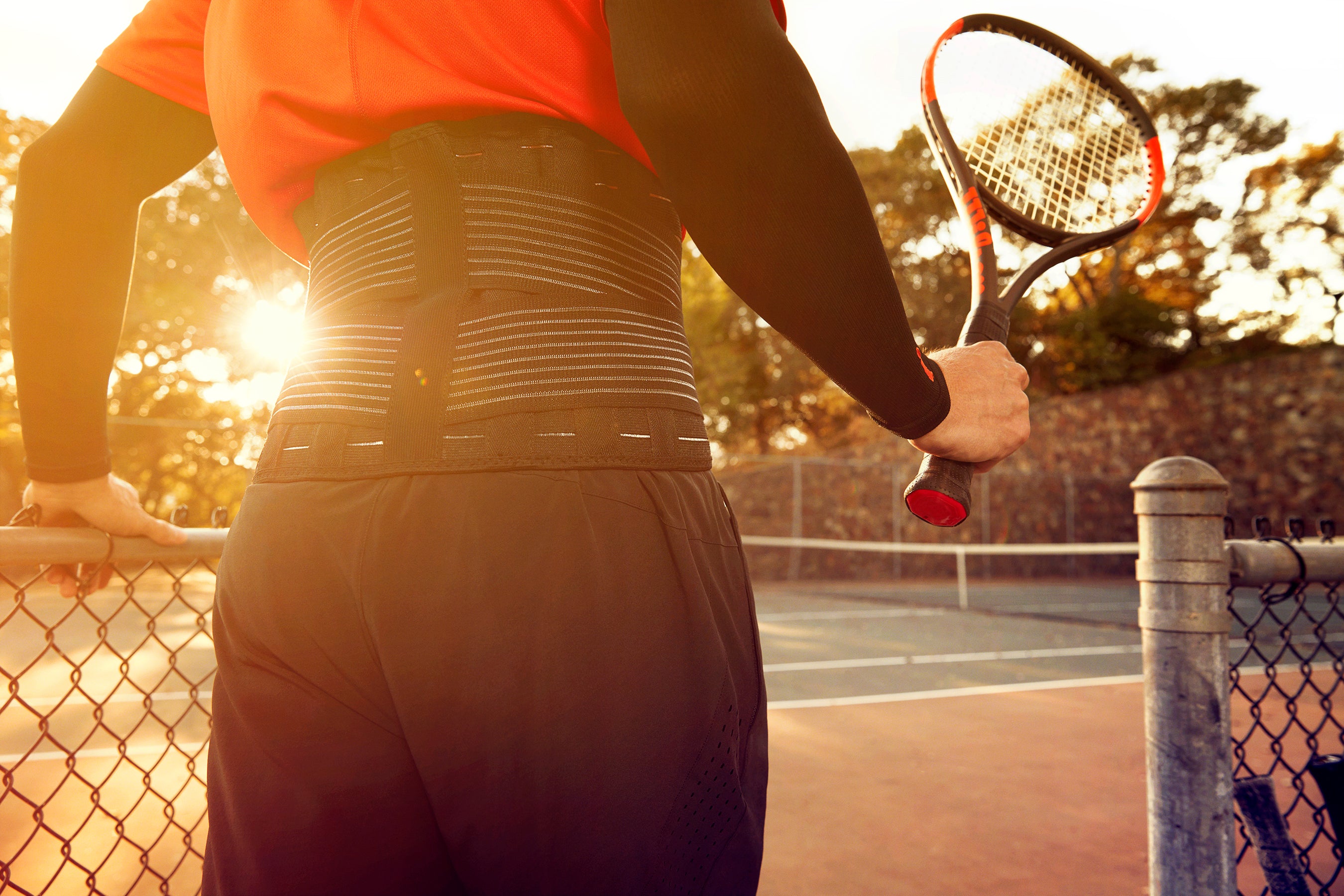There's a good reason our doctors tell us to sit up straight and keep a straight spine. It's the essence of the entire human body. Due to the spine, we stand and walk. As important as it is, we often seem to take that for granted. Sometimes we neglect our spine and stop engaging in proper workouts. Other times, we sit with bad posture that curves our spine and increases pain. Some people experience bad back pain because of an injury or because they underwent surgery. Whichever is the reason, wearable back support is what we need to properly take care of our backs. We'll learn more about it in this blog post.
When Does A Doctor Usually Prescribe A Back Support Brace?
There can be a wide array of conditions for which an orthopedic doctor might prescribe a solid back brace. It's commonly prescribed for treating scoliosis - a lateral spine curvature. A patient can also heal with a back brace after surgery. A back brace can offer lumbosacral support in other situations, such as exercise or at work. In most cases, we can see a back brace functions by enhancing spinal health and eliminating back pain from occurring in the future. There are patients for whom a back brace provides a non-invasive resolution to a painful back condition.
Orthopedists recommending a back brace for back pain is common. You might be apprehensive towards wearing one all day, but before you know it you'll forget you're even wearing it. A good back keeps your mood in check and promotes a healthier future for your body.
Wear the back brace properly to ensure that you get proper relief from pain. Also, it's vital to keep the brace in good condition to remain as effective as possible.
Who Should Wear A Back Support Brace?
The primary role of a back brace for pain is to confine spine mobility while offering support. For instance, back braces are usually recommended for adolescents suffering from scoliosis. It's mainly for children who are still growing and their spine curves between 25-40 degrees. The market will also offer you a scoliosis brace that's designed avoid further spine curving with the child's growth. By this, you can also prevent the requirement of surgery in your kid in the future.
Wearing a brace can stop curve progression in about 85% of kids with scoliosis. The brace can be very effective if worn for 23 hours regularly until the child stops growing.
Some conditions that back braces can provide relief for include:
- Osteoarthritis
- Lower back pain
- Herniated disc
- Vertebral compression fracture
- Spinal stenosis
- Post-operative healing
- Muscle strain
- Spondylitis
Looking At The Variety Of Back Braces Available
When it comes to wearable back support, the doctor will suggest a custom-fitted back brace for your particular body shape and condition. Usually, braces are either soft or rigid. Soft ones are elastic and commonly use velco straps, whereas the rigid braces have plastic shells but also use velcro. A brace works to straighten your spine's curve so you can recover faster and have pain relieved, also helping to avoid future injuries. For instance, a patient can wear a brace post-surgery to limit spine movement. The doctor will, of course, pick the right brace for you, but here are some kinds of back braces to learn about:
- Charleston bending brace– Manufactured out of plastic and is meant to wear only at night. If your lower back has C-shaped curves, then this product is the one for you.
- Boston brace and Wilmington brace– Styled like jackets, these back braces are worn beneath your clothing. Covering the torso from armpits to hips, these products are made of lightweight and rigid plastic. The Boston Brace features customized pads, and opens and shuts from the back. The Wilmington brace opens in the front, but has a more malleable fit to a wider range of body shapes and sizes.
- Milwaukee brace – In the early days, this was the first kind of brace for treating scoliosis. Doctors rarely recommend this model due to its lack of comfort compared to other products. It includes plastic that covers your hips & waist. The brace features a metallic ring above your shoulder and collar bone that many deem uncomfortable.
- Rigo-Cheneau brace– This is a custom-made plastic brace and can be put on with the Schroth method. This method is a kind of physical therapy for treating scoliosis.
There are many different back braces on the market today, and that's to suit the wide range of conditions and body shapes. You can also buy a non-prescription brace to boost posture and offer support while you are at your office desk. These braces are manufactured from flexible materials in the design of a belt or corset. Adjusting the soft braces is easy and requires no professional aid. However, it's strongly recommended to consult with your orthopedist on what model is best for you.
Final Say
Having a wearable back support is extremely important if you suffer any of the aforementioned spinal conditions. If you notice trouble breathing or develop rashes from the brace, consult your doctor immediately. You want the brace to fit comfortably. Start wearing the most high-quality brace for a healthy spine.
Read more

Badminton and tennis are sports that require repetitive motion from our hands and wrists - and occasionally fingers as well. Repetitive activities like this can irritate the tendons and nerves, le...

Everybody gets a headache now and then, but migraines are a different story. Migraines are more intense and painful, and are more common in athletes. Headaches and migraines can occur when exercis...






2 comments
Hi Art, yes, this product has Velcro straps.
Incrediwear Team
Does this back brace have Velcro strps
Art seiden
Leave a comment
All comments are moderated before being published.
This site is protected by hCaptcha and the hCaptcha Privacy Policy and Terms of Service apply.